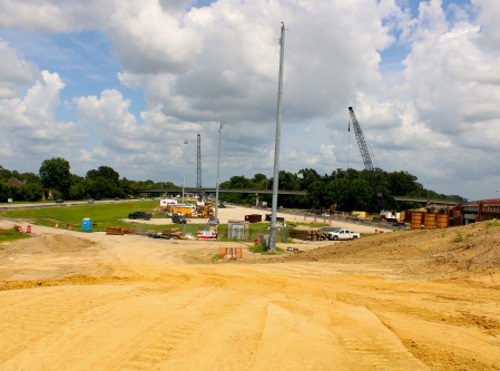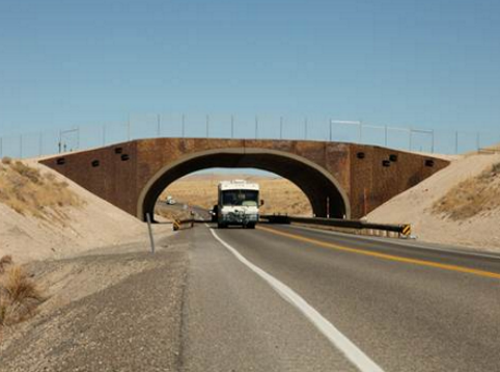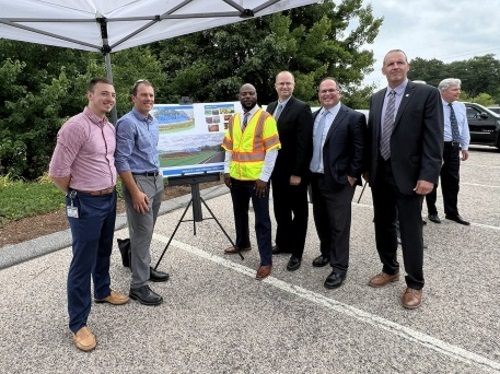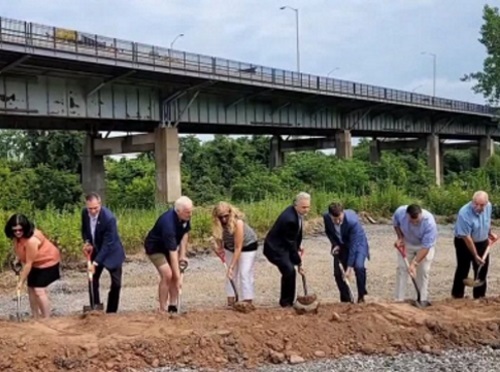FEDERAL ACTION
Republican Energy Roundtable Elicits State DOT Insights – AASHTO Journal
On climate, Democrats and Republicans don’t inhabit the same reality – Ars Technica
Are Wetlands the Next Target on the Supreme Court’s Radar? – Bloomberg Law
The U.S. plan to avoid extreme climate change is running out of time – Washington Post (Commentary)
President Biden’s Executive Actions on Climate to Address Extreme Heat and Boost Offshore Wind – White House (Fact sheet)
COVID-19
Gov. Hochul extends New York’s COVID state of emergency, discusses back-to-school plans – CBS New York
US sees decline in post-pandemic plastic recycling volumes – Circular
INFRASTRUCTURE RESILIENCE AND SUSTAINABILITY
Weather Responsive Management Strategies – FHWA Center for Accelerating Innovation
Designing longer-lasting, sustainable roadways for New Jersey – Rowan University
Support Slips for Phase Out of Gas-Powered Cars and Trucks – Route Fifty
UDOT moves million-pound bridge in Cedar City with dish soap and a bit of elbow grease – St. George News
City of Philadelphia Partners with EVgo to Support Electrification of Municipal Fleet – City of Philadelphia (Media release)
AIR QUALITY
Connecticut governor announces new climate bill with plans to create zero-emission school buses – WTIC-TV
U.S. Drivers Have Lost $8 Billion to Red Lights – Can AI Traffic Signals Save Us? – LX
ENVIRONMENTAL JUSTICE
For State Transportation Agencies, a Long Road To Increase Diversity – Route Fifty
NATURAL RESOURCES
Michigan taps funding sources to support water infrastructure – MI Department of Environment, Great Lakes, and Energy
Funding is on the way for drought resilience and aging water infrastructure throughout Colorado – KRDO-TV
Saving the monarchs: Pollinators dictate state’s mowing approach – Hearst Midwest
Stop Ruining Starry Nights – New York Times
CULTURAL RESOURCES
Improving the mechanics, restoring the 1870s feel to the Monongahela Incline – Pittsburgh Post-Gazett
HEALTH AND HUMAN ENVIRONMENT/ACTIVE TRANSPORTATION
T-Mobile T IoT To Support Bicycle/Motorist Safety – Telecompetitor
Cyclists Plead for Bike Lanes as Part of Waiānuenue Avenue Project – Big Island News
Rail Trail: Abandoned 1800s railroad could become linear park, trail through Durham – WRAL-TV
TRB RESOURCES/ANNOUNCEMENTS
Renewing U.S. Infrastructure for Resilience and Equity – National Academies of Sciences, Engineering, and Medicine
Complete the Puzzles in Planning and Environmental Linkages Practice – TRB (Webinar)
FEDERAL REGISTER NOTICES
Notice To Establish the Transforming Transportation Advisory Committee (TTAC) – Office of the Secretary, USDOT (Notice)
Notice To Solicit Members for the Transforming Transportation Advisory Committee (TTAC) – Office of the Secretary, USDOT (Notice)
Air Plan and Operating Permit Program Approval; TN; Electronic Notice (e-Notice) Provisions – EPA (Proposed rule)
National Emissions Standards for Hazardous Air Pollutants; Delegation of Authority to Washington – EPA (Proposed rule)
Air Approval Plans; Louisiana; Repeal of Excess Emissions Related Provisions – EPA (Proposed rule)
Notice To Postpone Public Hearing and Extend Public Comment Period for Supplement to the Next Generation Delivery Vehicles Acquisitions Final Environmental Impact Statement – Postal Service (Notice)
Reflectorization of Rail Freight Rolling Stock; Codifying Existing Waivers – FRA (Notice of proposed rulemaking)
Surface Transportation Project Delivery Program; California High-Speed Rail Authority Audit Report – FRA (Notice; request for comment)
Termination of the Preparation of an Air Tour Management Plan at Everglades National Park, Florida – FAA (Notice)
Endangered and Threatened Wildlife and Plants; Regulations for Designating Critical Habitat – Fish and Wildlife Service (Final rule)
United States Travel and Tourism Advisory Board: Request for Applications for Membership – International Trade Administration (Notice)
Pipeline Safety: Meeting of the Liquid Pipeline Advisory Committee – Pipeline and Hazardous Materials Safety Administration (Notice)
Rail Tie Wind Project Record of Decision – Western Area Power Administration (Notice)
Inland Waterways Users Board Meeting Notice – Army Corps of Engineers (Notice)
Deepwater Horizon Oil Spill Natural Resource Damage Assessment, Florida Trustee Implementation Group: Final Phase V.4 Florida Coastal Access Project: Restoration Plan and Supplemental Environmental Assessment; and Finding of No Significant Impact – Department of the Interior (Notice of availability)




